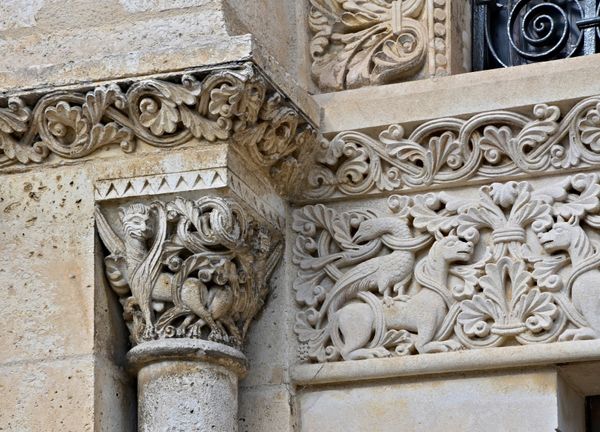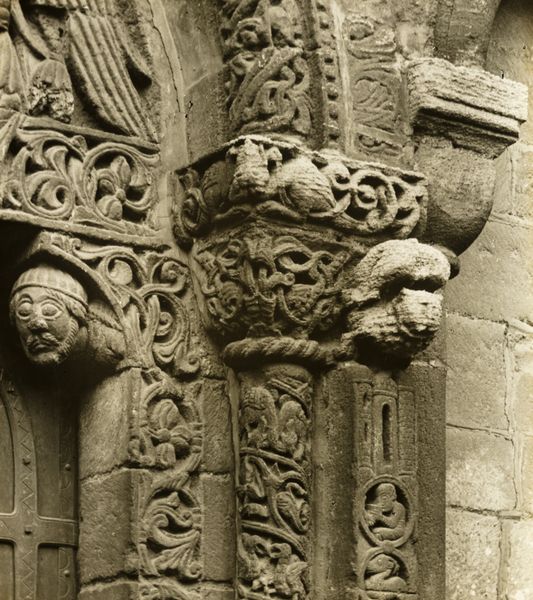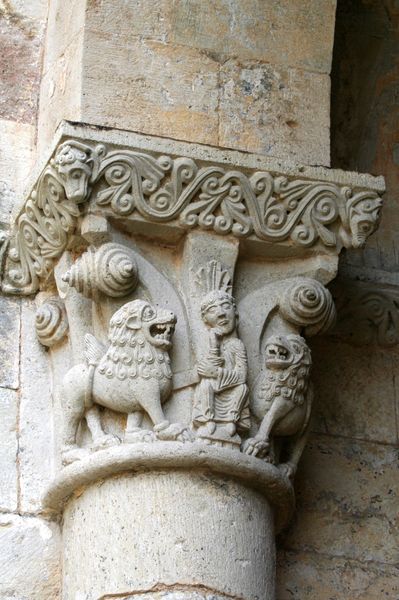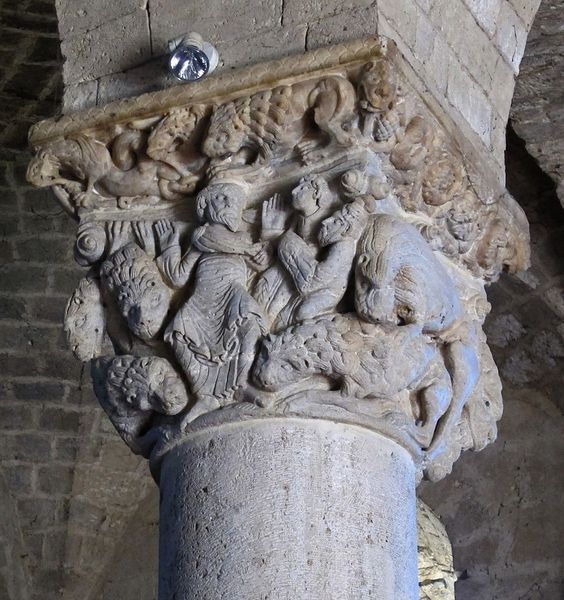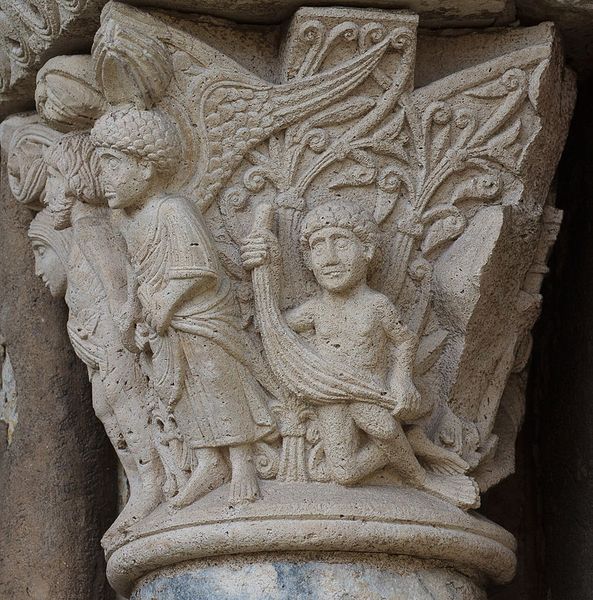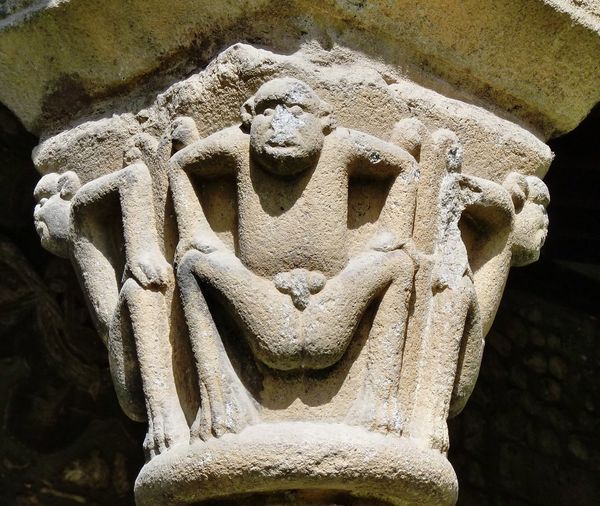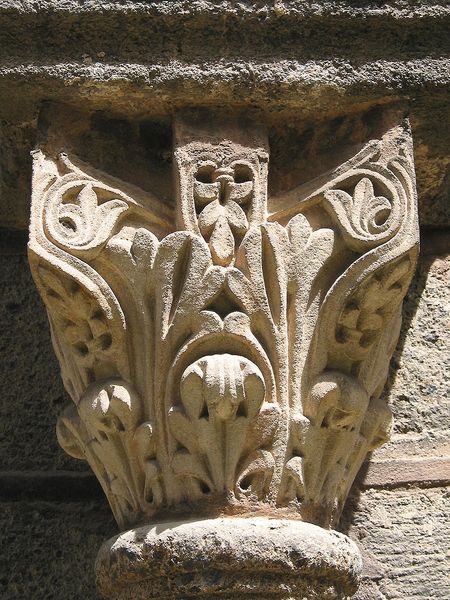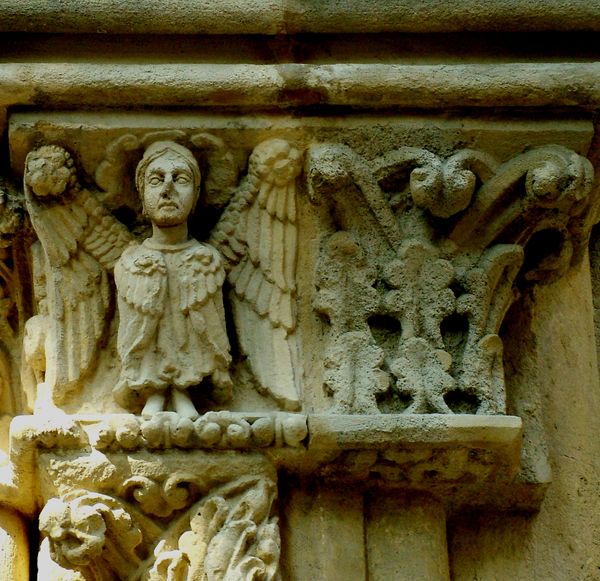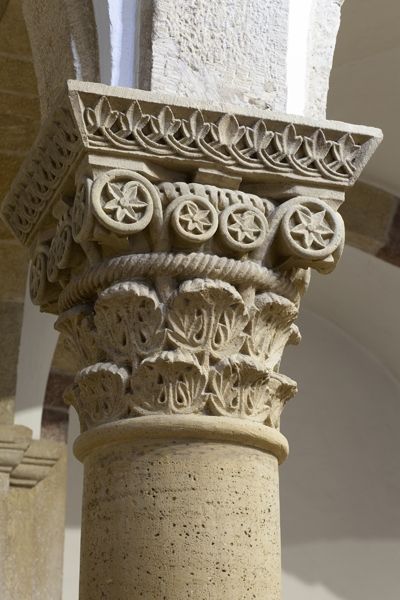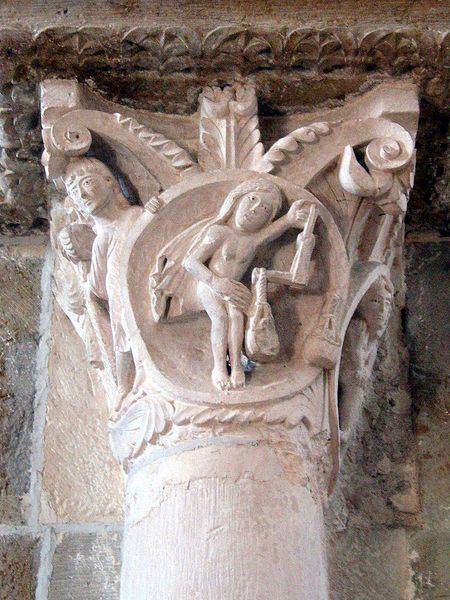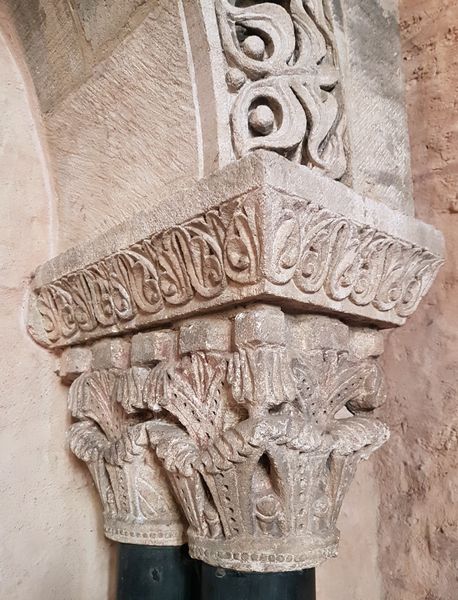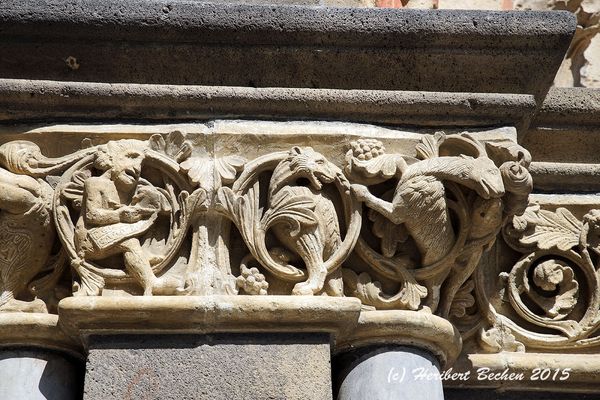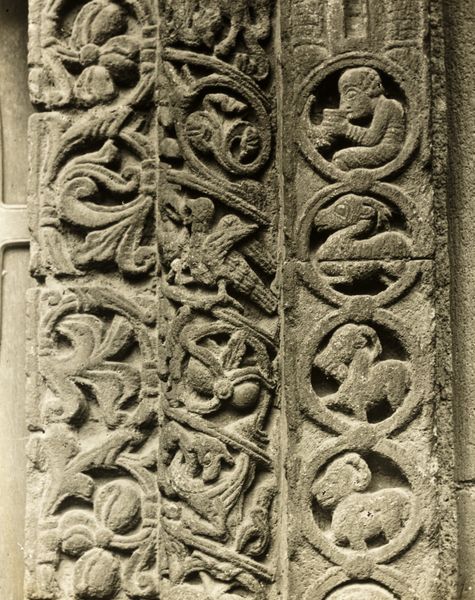
carving, sculpture, architecture
#
carving
#
sculpture
#
figuration
#
romanesque
#
sculpture
#
architecture
Copyright: Public domain
Editor: This is a stone capital from San Martín De Tours De Frómista in Spain, dating back to 1060, part of Romanesque architecture. It's…intense. The figures carved into it seem to be caught in a dramatic moment. What story do you think it tells? Curator: Indeed. Observe how the figures intertwine, almost violently. Notice the snake at the bottom and the figures surrounding what appears to be a central, possibly symbolic, form. To me, this resonates with themes of temptation, the loss of innocence, or perhaps a primal struggle between good and evil, typical for Romanesque carvings that serve didactic, moralizing roles within a sacred space. What emotions does the overall composition evoke in you? Editor: Definitely unsettling! The contorted figures and the serpent-like forms create a feeling of chaos, like a battle is unfolding right on top of this column. Is this common in Romanesque sculpture? Curator: Yes, particularly during that period. The intent was to portray biblical stories or moral lessons through dramatic, accessible imagery for a largely illiterate audience. Consider the architectural setting – it's high up, meant to be seen and contemplated. The artist uses recognizable archetypes. Does that give you a fresh idea about the artist’s goals? Editor: I guess the exaggerated gestures would have helped viewers interpret the story from a distance. It’s like visual storytelling that emphasizes important messages within their culture. It’s like…a comic book page in stone, communicating anxieties about morality and faith in an immediate and powerful way! Curator: Precisely! And seeing it that way, what does that tell you about its enduring value and impact? Editor: It reminds us of humanity’s constant wrestle with temptation and faith. The sculpture served not only as a structural element but as a mirror reflecting the shared beliefs and moral dilemmas of the medieval world. Curator: I would concur completely.
Comments
No comments
Be the first to comment and join the conversation on the ultimate creative platform.
